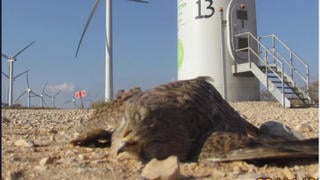
Do photos of sunflowers facing away from the sun prove the sun has been replaced? No, that's not true: Mature sunflowers do not follow the sun throughout the day, a sunflower farmer told Lead Stories, and also a scientific study shows. Only young sunflowers track the sun across the sky over the course of the day, so photos that show sunflowers facing away from the sun in daylight capture plants that have reached maturity and are no longer tracking the sun and don't support theories of replacement of the sun.
The claim appeared in a video published on TikTok on May 18, 2024, by Cololette Reynolds (archived here), with the woman speaking as the video opens:
They're called sunflowers people, not shun flowers
The caption on the video reads:
Mysterious phenomenon, shocks the world as sunflowers globally recently, shun the sun that you normally follow and turn all of their faces away from that sun in our sky #fyp #foryou #fypシ゚viral #goviral #tiktok #virał #foryoupage #trending #fypage #sunflower #sun #crazy #storytime #story #truestory #follow #like #likes #help #scary #spooky #weird #phenomenon #sky #mystery #explore #exposed #history #share #video #greenscreen #viraltiktok #videoviral #hot #farmlife #farm #cow
This is what the post looked like on TikTok at the time of writing:
(Source: TikTok screenshot taken on Tue May 21 21:22:16 2024 UTC)
The woman in the video claims that sunflowers are "solar following or solar tracking," which is known as heliotropism (archived here) meaning they rotate towards the sun throughout the day. She claims that "sunflower farmers" have been noticing the change in the flowers' directions but shows no proof that the images of sunflowers in the video are from actual sunflower farmers. Nor does she cite by name any farmers observing a sudden change in flower behavior.
At :05 in the video she says:
But it does seem as though just recently all of the sunflowers of the world, well my friends, are doing not what sunflowers do, they are shunning the sun.
At 1:14 in the video she references that the sun may not still be the sun, which is a variation of the conspiracy theory about changes in the sun, as reported by Rolling Stone magazine (archived here). Her comments are:
Or maybe one might say they wouldn't shun the sun well, if that was still the sun.
At 3:54 in the video, she posts a picture of sunflowers from the back, and says "one confused sunflower grower" was asking, "Why are they facing the wrong way? The sun is behind you." She continues and shows a second photo of sunflowers from behind, saying, "That my friends is a mass rejection." She provides no credit, location nor date for the images posted.
Tom Muller, owner of Muller Ag, a sunflower farm in California, told Lead Stories via telephone on May 21, 2024 how sunflowers react to the sun as they grow:
So, the type of sunflowers that I grow are hybrid sunflowers. So I have a male sunflower that has multiple heads and a female that has one head. The male pollen pollinates the female. And I make a hybrid when those flowers open. When they're young, they will open from the east and they will, as the day goes on, they face the west at night, they go back down to the east. Once the head starts getting big, it will eventually put its head down so it avoids sunburn. So, because the head's so big, it doesn't have the energy to turn that thing from east to west.
He further explained what happens to mature sunflowers:
The sunflower starts in the east goes to the west returns back, but when it gets big and it will stay in one position and normally not straight up because it'll sunburn all the seeds.
That tracks research into the phenomenon. A 2016 study (archived here) conducted by The University of California, Davis, reported that young sunflowers track the sun but as the flowers mature they no longer rotate and stay facing east throughout the day. A press release by the university titled,"Sunflowers Move by the Clock," explained how mature sunflowers no longer move during the day:
As the sunflower matures and the flower opens up, overall growth slows down, and the plants stop moving during the day and settle down facing east. This seems to be because, as overall growth slows down, the circadian clock ensures that the plant reacts more strongly to light early in the morning than in the afternoon or evening, so it gradually stops moving westward during the day.
In August 2016, Science.org published an article (archived here) about a study of sunflower heliotropism, the changing orientation of their flower heads and pollinator visits. The article explained how the study reported mature sunflowers face east:
Searching for the Sun
The growth of immature sunflower plants tracks the Sun's movement. The young plants lean westward as the day progresses but reorient to the east each night. As the flowers mature and open, they settle into a stable east-facing orientation. Atamian et al. show how circadian rhythms regulate the east-west elongation of cells in the young plants' stems (see the Perspective by Briggs). They show that eastward-oriented flowers are warmer than westward-oriented flowers, and this warmth attracts pollinators. Auxin signaling pathways in the stem coordinate to fix the eastward orientation of the mature plant.
Science.org published a video (archived here) titled, Why sunflowers follow the sun, opens noting: "During the day, young sunflower plants track the sun from east to west. At night, the plants turn to face east, awaiting the rising sun." At :14 in the video it states, "Adult sunflowers settle down and just face east."


















